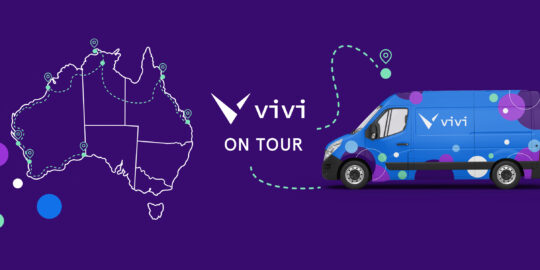
Teachers usually have their hands full in classroom settings, maintaining discipline while also encouraging initiative and ensuring students’ happiness. So, why not make teachers’ lives easy using technology to digitize the classrooms.
Modern screen mirroring solutions enhance classroom instruction and dissemination of information in schools, considerably enhancing the student learning experience. No matter how complex the topic is, when you’re able to captivate your students’ attention through interactive technology, you can teach anything.
Screen mirroring in schools allows teachers to create controlled, collaborative, and creative classroom spaces. They can conduct classes using a combination of devices and software to foster quality education, interaction, and creativity among learners.
What Is Screen Mirroring?
Screen mirroring is a screen-sharing technology where you can wirelessly connect your device to a classroom display in real-time. To make this work, both the sending and receiving devices need to give permission.
The Sending Device
For screen mirroring to work, you need to use a device, like a laptop or tablet. It will connect wirelessly to a receiving device to enable the teacher and students to share the content on their device to a central classroom display. You can even have multiple displays in the classroom so students can work together in groups and share content to their group’s display.
While there are screen mirroring apps on the market, most are not built for the classroom. They can be difficult to set up, work only on some devices, and don’t provide teacher control over what is shared or when. To accommodate all devices, you should choose a solution that is device-agnostic, working on Android phones, iPhones, iPads, tablets, Chromebooks, Windows PCs, Macs, and more.
Screen-Receiving Device
The device that displays the shared screen is the screen-receiving device. These displays can be flat-screen displays, projectors, or other screens. Even if your schools use interactive flat panels, the best screen mirroring solutions can connect with them, bringing additional value to existing technology investments.
With modern screen mirroring solutions, the classroom only needs a small box, much like a receiver, to enable the sharing from one device to a display.
How Can Schools Benefit From Screen Mirroring Solutions
Integrating the use of screen mirroring in their classrooms makes learning more interactive. Investing in this technology helps instructors capture students’ attention and offer engaging learning material.
While teachers can control permissions and shared content, the ultimate control of the solution remains with the school management and IT at the district level. So, they can also use this technology to provide school-wide notifications, transmit custom messaging to screens in specific school building hallways, and shut the system down completely across all schools if needed.
Related: Why Invest in Screen Mirroring for Education
Benefits Of Screen Mirroring
Here are a few benefits of using screen mirroring features in classrooms.
- Cost-Effective: Wireless screen mirroring is a more efficient investment as it will reduce maintenance costs in the long run.
- Better Collaboration: A wireless screen mirroring solution can enhance collaboration as multiple users can connect to the sending device.
- Fast Customer Service: Screen mirroring solutions provide a central control system, so the IT team can regulate the technical issues without being present physically.
- Comprehensive Metrics: You can determine the student and teacher usage of the service and provide an analysis that helps you get insight into the ROI.
- Regular Updates: Wireless screen mirroring software can be updated conveniently on all devices at once. This makes it a more efficient and consistent option, increasing the profitability of investment in the long term.
- Completely Safe: Cloud-based management and central control system allow safe access and usage of the service.
- Reliability: No latency, integration of video management, and classroom network performance reduce the need for IT support.
- Personalized Learning Environments: Through increased engagement and participation, it is possible to achieve better educational outcomes with wireless mirroring solutions.
A Modern Replacement For Projectors
Teachers usually illustrate and elaborate the lessons on white or blackboards. Moreover, when teaching hundreds of students at a time, they might use projectors or presentations to explain complex topics.
But since setting up the projectors and presentations is a lot of work, most instructors just avoid it when they can. Moreover, the cost of maintenance makes these technologies too costly to use at schools. Besides this, these can’t be integrated or controlled through a central system.
Screen mirroring is a modern replacement for projects that’s easy to set up and use. In addition, it is a much more efficient solution with applications beyond classroom lessons, unlike projectors.
Teachers no longer have to stand in one place to teach. Instead, they can roam around the class and engage with the students while the lesson continues to play via screen mirroring. They can address the queries of the students right then and there.
In contrast, HDMI cables restrict the movement of the teachers because the receiving device is attached to the sending device through a cable. With screen mirroring, teachers can carry the sending device around with them.
Moreover, if your device doesn’t have an HDMI port, you won’t be able to connect it to the receiving device to share the display. But wireless screen mirroring has eliminated this factor.
Anyone with permission can connect their device with the in-class receiving device wirelessly with a built-in screen mirroring feature or a screen mirroring solution. They can display any teacher-approved video on YouTube, any school app, Google Classroom, or anything else they want to share with the class on the screen.
How Can Students Benefit From Screen Mirroring?
Students can use screen mirroring solutions with projectors, flat panel TVs, or interactive flat panels to share their work with the class or in presentations. This saves time since the wireless connection is much faster than HDMIs. It will also increase the confidence of the student presenting, ultimately reinforcing learning objectives.
Furthermore, they can engage and get prompt feedback from their classmates and teachers. When they don’t have to stick to one spot, they can be creative. This also increases confidence and supports reinforced learning objectives.
However, the controls of the screen mirroring still lie with the teachers and the IT department. They can stop or pause screen-sharing whenever they find it appropriate.
Related: The Impact Engaging Technology in the Classroom Has on Learning
How IT Controls Screen Mirroring in Schooling System
Previously, the school’s IT department had to visit on-site to figure out technical problems and provide fixes. With screen mirroring’s plug and play feature, IT doesn’t have to come over to set up or fix the issues of the devices.
They do not need a lot of resources to manage it – one screen mirroring solution gives them access to every receiving box. As we said, they can rapidly shut down every single display across the district all at once. IT can also send and display emergency notifications on any and all displays whenever they need.
What to Look for in Screen Mirroring Solutions
You must find the right screen mirroring solution with all the necessary features that fall within your budget. But what are the features that you need to look for?
First, the best screen mirroring solutions are compatible with a wide range of devices. This ensures that the students and teachers can conveniently connect and benefit from them no matter their device brand or type.
Secondly, even though you need to facilitate better connections for students, you can’t allow them to display anything at any time. The screen mirroring solution should give teachers the ultimate authority over what content students can share on the classroom display and when they can do it. This feature prevents any disruption during sessions or inadvertently sharing something inappropriate or irrelevant to the lesson.
The screen mirroring solution must be easy to use, as this is the primary reason for switching from projectors to screen mirroring. So, it must have an interface that anyone can understand and use conveniently.
Moreover, the solution should be plug n’ play so that the IT team doesn’t have to send techs to individual classrooms for setup and maintenance. Once the box is set up in the classroom and the app downloaded onto the devices, it should be as easy as a click to start sharing.
Make sure the solution gives IT that central management piece we keep talking about. Through the dashboard of the solution, they should be able to assess its usage but also give them access to turn off every screen (not device). They must also be allowed to show an emergency notification to hundreds of classroom screens at once.
Screen Mirroring that Doesn’t Waste Time
In these modern times, teachers don’t want to waste time setting up and using technology – they just want it to work. And students need to be engaged with the technology they see as fun and interactive. When they both have effortless access to screen mirroring, they can collaborate dynamically for a more creative and motivating learning environment.
More than 40,000 classrooms across the globe already trust Vivi to provide an unprecedented increase in student engagement and test results. To ensure that it works for your classroom before buying it, you can visit our website and book a demo. Contact us today.



